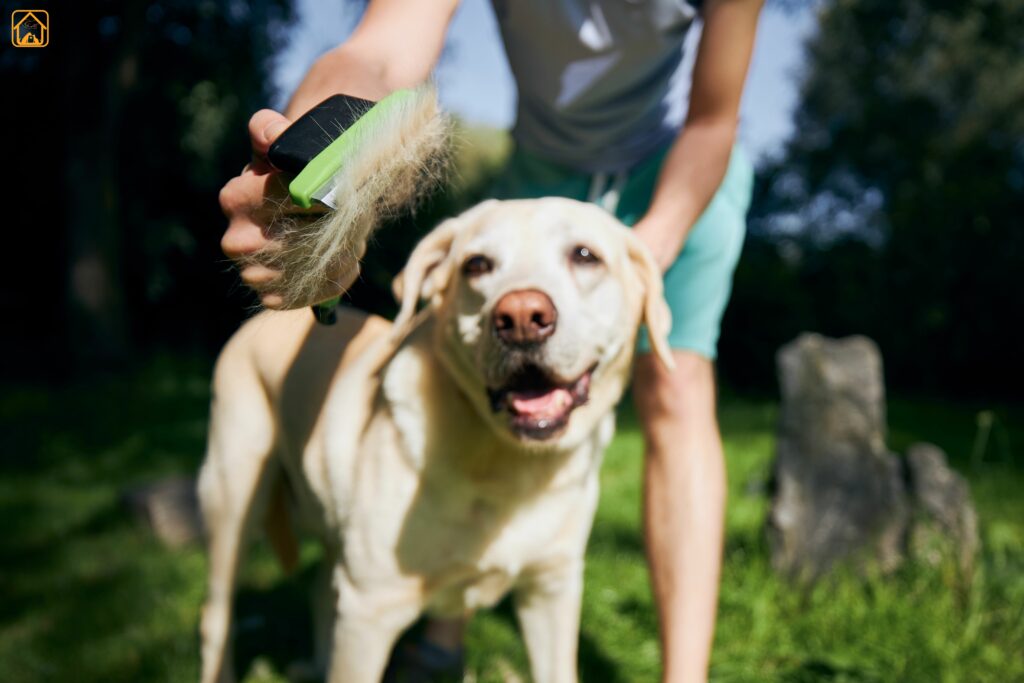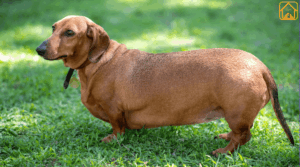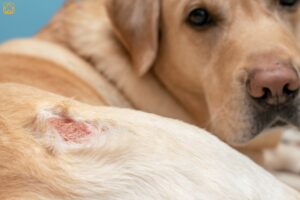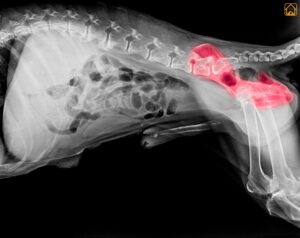Labrador Retriever Coat Basics: Double Coat, Shedding, and Moulting Explained
Labradors have what’s called a double coat, a soft, insulating undercoat beneath a tougher, water-resistant outer layer. This coat is a marvel of nature, keeping your Lab warm in winter and cool in summer. But it also means Labradors shed a lot, especially during spring and fall. That’s when you’ll notice tufts of fur everywhere and wonder: do Labrador Retrievers shed more than other breeds? Yes, they do!
For a deeper understanding of the different coat types and colors, be sure to check out our detailed guide on Labrador coat colors.
Understanding Shedding and Moulting
- Normal Shedding: Happens year-round. You’ll always find some loose hair.
- Moulting Seasons: Lab shedding peaks twice yearly, usually spring and fall. This is when the undercoat “blows out.”
- Why Double Coats Matter: The double coat protects your Lab’s skin and helps regulate body temperature.
Some pet parents ask, “Do black Labradors shed more?” or “Does a chocolate Lab moult differently?” Honestly, all Labs, yellow, black, chocolate, have similar shedding patterns. If you’re sweeping up hair every day, you’re not alone. It’s just part of loving a Labrador Retriever and their beautiful, functional fur.
How Often Should You Groom and Bathe a Labrador?
Wondering how often to bathe a Labrador or how much brushing is enough? I used to think my Lab needed a bath every week, especially after muddy adventures. Turns out, overbathing can dry out their skin and strip natural oils. Here’s a practical schedule for Labrador Retriever grooming:
- Brushing: Once or twice weekly for most of the year. Daily during heavy shedding (moulting) seasons.
- Bathing: Every 4-6 weeks, or after especially dirty play sessions. Use dog-specific shampoo.
- Quick touch-ups: Wipe muddy paws, check ears, and tidy up as needed.
Labs who love swimming or rolling in muck might need more frequent baths, but for most, less is more. Remember, a regular Labrador Retriever Grooming routine keeps their coat shiny and your house cleaner, well, a little cleaner at least!
Essential Grooming Tools and Products for Labradors
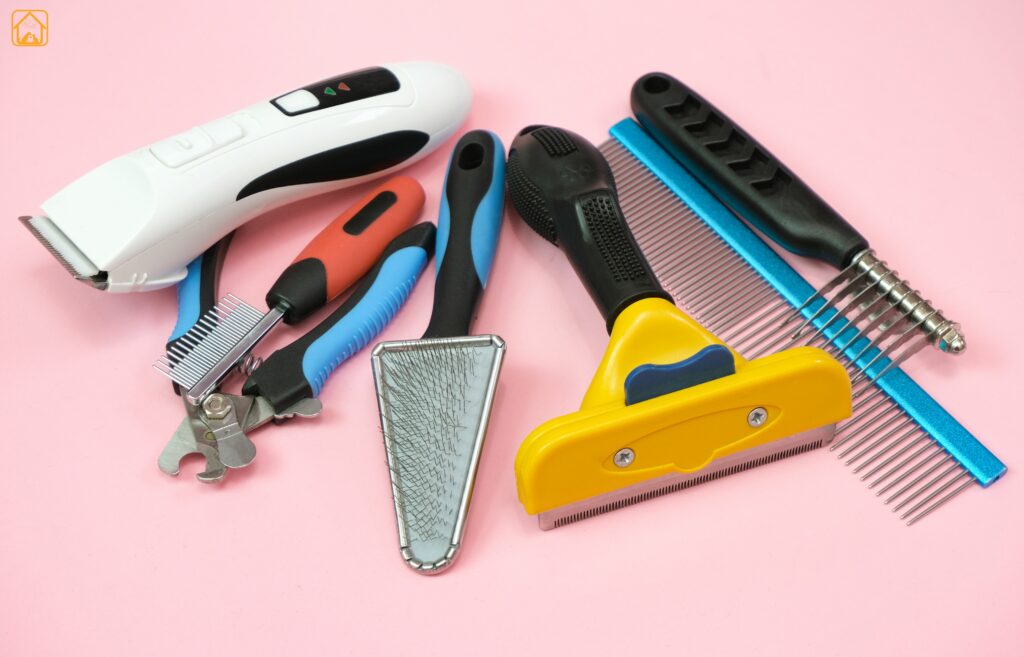
Let’s be real. You can’t stop Labrador retrievers from shedding, but you can make it manageable, and even a bonding experience. Having the right tools makes a huge difference! Labrador fur is dense, so not just any brush will do. I learned this the hard way, my first brush barely made a dent during shedding season. Here’s what you’ll want in your grooming kit:
- Slicker Brush: Great for removing loose hair from the topcoat.
- Undercoat Rake: Essential during moulting seasons to pull out dead undercoat hair.
- De-shedding Tool: Helps manage heavy Labrador shedding.
- Bristle brush: Distributes natural oils, smooths coat, perfect for finishing touches.
- Grooming gloves: Feels like petting, collects loose hair, ideal for anxious dogs.
- Dog Shampoo: Look for gentle, moisturizing formulas to protect skin and coat.
- Nail Clippers or Grinder: For regular nail trims.
- Dog Toothbrush and Canine Toothpaste: For oral health.
- Ear Cleaning Solution: Prevents infections in those floppy Lab ears.
- Absorbent Towels: Quickly dries wet fur, useful after baths or water play.
Quality tools last longer and make grooming sessions easier for both you and your Lab. Don’t forget a big towel for post-bath zoomies! Below is the table of all required grooming essentials.
| Tool | Purpose |
| Slicker brush | Removes tangles, loose fur |
| Undercoat rake | Targets shedding undercoat |
| Deshedding tool | Deep shed removal |
| Bristle brush | Smooths coat, spreads oils |
| Grooming gloves | Gentle, petting-style grooming |
| Nail clippers/grinder | Keeps nails short and safe |
| Dog toothbrush/paste | Maintains dental health |
| Dog ear cleaner | Prevents ear infections |
| Absorbent towels | Dries after bath (Labs love water!) |
Pro Tips:
- Choose a best dog brush for Labradors with firm-yet-gentle bristles. Too harsh, and you risk brush burn; too soft, and you’ll miss the undercoat.
- Keep a stash of old towels handy, Labs are Olympic-level shakers after baths.
- Never use scissors or trimmers on your Lab’s coat. The only safe spot to trim is between the paw pads (for grip and comfort).
Now that you’ve got the tools ready, it’s time to put your Labrador Retriever grooming knowledge into action with a step-by-step routine.
Step-by-Step Labrador Retriever Grooming Routine: Brushing, Bathing, and Drying

Let’s break down a typical dog grooming session for Labrador Retrievers. I’ll admit, my Lab thinks grooming time is playtime, so patience (and treats) go a long way.
Brushing
- Start with the slicker brush to remove surface debris and loose hair.
- Use the undercoat rake or de-shedding tool, especially during heavy shedding.
- Go gently around sensitive areas, belly, legs, tail.
Bathing
- Brush out tangles before getting wet. Mats are harder to remove once soaked.
- Use lukewarm water and dog-specific shampoo. Lather from neck to tail.
- Rinse thoroughly, leftover soap can irritate skin.
- Optional: Use a conditioner for extra softness.
Drying
- Towel dry thoroughly. Labs love a good shake, be ready!
- Use a pet-safe hairdryer on low if your Lab tolerates it.
- Check for any remaining tangles or debris.
Keep sessions upbeat and positive. A treat after each step works wonders. And yes, expect water everywhere!
Nail Trimming, Ear Cleaning, and Dental Care for Labradors
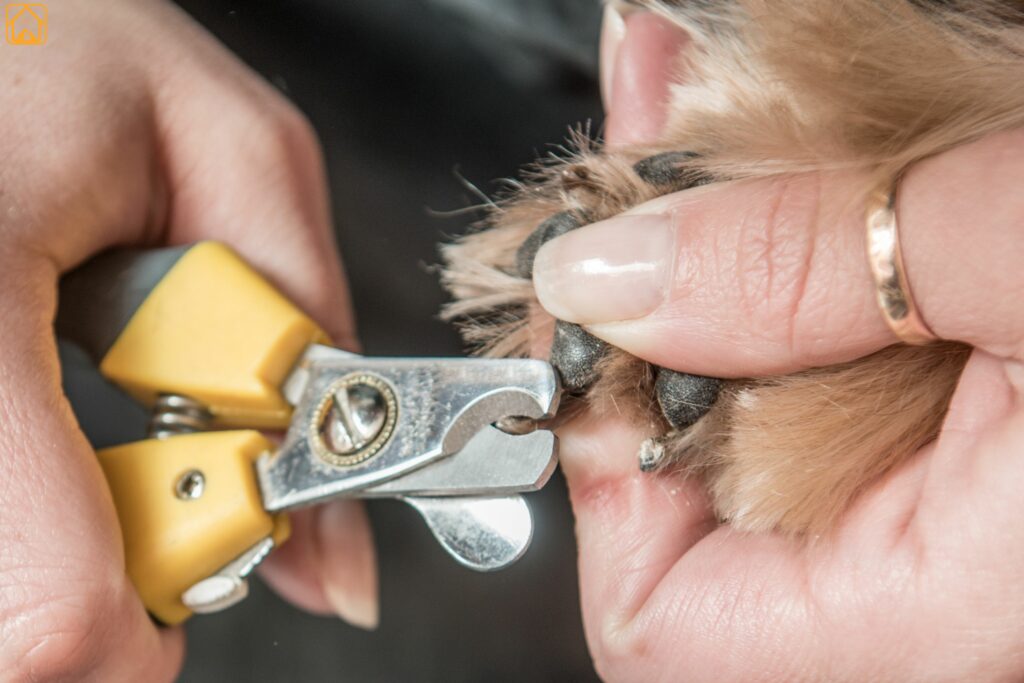
Grooming isn’t just about fur. Neglecting nails, ears, or teeth can lead to bigger health issues. I used to dread nail trims, but it got easier with practice.
Nail Trimming
- Trim every 3-4 weeks, or sooner if you hear nails clicking on the floor.
- Use dog-specific clippers or a grinder.
- Take off small amounts to avoid the quick.
Ear Cleaning
- Labs have floppy ears prone to moisture buildup and infection.
- Wipe ears weekly with a vet-recommended ear cleaner.
- Look for redness, odor, or discharge; see a vet if you notice any.
Dental Care
- Brush teeth with canine toothpaste several times a week.
- Offer dental chews or toys to help reduce tartar.
Eye Care
- Labradors often get eye goop after windy walks or play. Wipe gently with a clean, damp cloth.
- Yellow or green discharge? That could signal an infection, contact your vet.
- Keep the area around their eyes clean. No trimming needed, just occasional gentle wiping.
Regular checks for nails, ears, eyes, and teeth aren’t just about looks. They’re early-warning systems for bigger health problems.
Dealing with Labrador Shedding: Tips for Managing Hair at Home
Living with a Labrador means living with fur. It’s in your soup, your socks, your morning coffee. But with a few smart strategies, you can keep it under control.
Brushing: Your Secret Weapon
- Daily Brushing During Shedding: In spring and fall, grab that undercoat rake and slicker brush. Five to ten minutes a day makes a huge difference.
- Weekly Brushing Otherwise: Even in off-peak times, a good weekly session keeps fur, dander, and mats at bay.
- Best Brushes for Labradors: Try a combo of slicker brush (for topcoat), undercoat rake (for deep fluff), and bristle brush (for shine).
Bathing: Timing Is Everything
- Monthly Baths: Use a gentle, Lab-appropriate dog shampoo (hypoallergenic for sensitive skin). Overbathing strips oils and makes shedding worse.
- During Heavy Shedding: A bath can help loosen old undercoat. Brush thoroughly before and after the bath.
Nutrition: Feed the Coat
- High-Quality Food: Diet makes a world of difference. Opt for foods rich in omega-3 and omega-6 fatty acids (think salmon oil, flaxseed).
- Supplements: If your vet approves, try fish oil or skin and coat supplements for extra shine and less itch.
- Plenty of Water: Hydration = healthy skin and less flaky shedding.
Home Cleaning Hacks
- Vacuum Often: Get a vacuum made for pet hair. Cordless ones are great for quick cleanups.
- Fur Magnets: Use a rubber squeegee or damp gloves to lift fur from furniture.
- Wash Bedding Weekly: Your Lab’s bed traps tons of hair. Just toss it in the washer.
- Air Purifiers: If allergies are an issue, a HEPA filter can help catch fur and dander.
Honestly, I’ve come to accept a little fur everywhere. But with a solid Labrador grooming routine, it’s manageable, and your Lab will thank you for the extra attention.
Shaving Labradors: Myths, Dangers, and What to Do Instead
Ever been tempted to shave your Labrador to stop the shedding? Don’t do it! A Labrador’s double coat is not just for show. Shaving your Lab can damage their coat for life and disrupt their temperature control.
- Myth: Shaving stops shedding. Reality: It only makes the hair shorter, and can cause patchy regrowth.
- Danger: Shaved Labradors are at higher risk for sunburn, overheating, and skin issues.
- Best Practice: Stick to regular brushing, bathing, and a healthy diet for shedding control.
If you’re struggling, ask your vet or a professional groomer for advice. But please, never shave a Labrador Retriever (unless medically required).
Grooming for Labrador Puppies vs. Adults: What You Need to Know
Grooming a wiggly Labrador puppy takes patience (and sometimes a helper!). Start early, keep sessions short, and make it fun with praise and treats. I remember my pup’s first nail trim, he wriggled so much I nearly gave up. But with time, he learned to relax.
- Puppies: Gentle brushing and basic handling, feet, ears, teeth, build positive associations.
- Adults: Full grooming routine, including undercoat raking and regular nail trims.
Tip: Begin with short sessions and gradually increase as your puppy gets comfortable. Early, positive grooming experiences set the stage for a lifetime of easy care, and a happy, healthy dog.
Common Grooming Mistakes and How to Avoid Them
Even the most devoted Lab parent makes mistakes. Here’s how to avoid them and keep your Labrador retriever grooming routine on-point:
- Shaving the Coat: We’ve said it before, but it’s worth repeating, never shave your Lab! It ruins their natural protection and doesn’t help with shedding.
- Overbathing: Too many baths strip essential oils, leading to dry, itchy skin and more shedding. Stick to once a month, unless your Lab has rolled in something memorable ha ha.
- Using Human Products: Human shampoos (even baby shampoo) mess with your dog’s pH. Always use dog-specific shampoo and ear cleaner.
- Skipping Regular Brushing: Letting mats and loose fur build up means more work later. A quick daily brush is easier than wrestling with a tangled mess.
- Ignoring Nails and Ears: Overgrown nails hurt, and dirty ears lead to infections. Regular checks are a must.
- Trimming Fur Outside of Paw Pads: Only trim between paw pads. Trimming elsewhere damages the coat and can cause skin issues.
- Forcing the Process: If your Lab is anxious, take it slow. Use treats, praise, and short sessions. Make grooming a positive experience, not a wrestling match.
Regular grooming helps your dog stay healthier and live longer. Check out our labrador health issues guide to understand the problems that can arise from poor or infrequent grooming.
FAQs: Labrador Retriever Grooming, Shedding, and Coat Care
Do Labrador Retrievers shed a lot?
Yes, Labradors are notorious shedders due to their double coat. Expect moderate shedding year-round, with heavy “blowouts” in spring and fall. Regular brushing helps control the mess.
Should I shave my Labrador Retriever to reduce shedding?
No, you should never shave a Labrador unless a vet recommends it for medical reasons. Shaving damages the double coat and exposes your dog to sunburn and temperature extremes.
How often should I bathe my Labrador?
Most Labs need a bath every 4-6 weeks, or after messy adventures. Overbathing can dry out their skin, so stick to dog-specific shampoos and rinse thoroughly.
What’s the best brush for Labrador Retriever shedding?
An undercoat rake or de-shedding tool is ideal for heavy moulting. A slicker brush works well for regular grooming and removing surface debris.
Why is my Lab shedding more than usual?
Seasonal changes, stress, poor diet, or health issues can increase shedding. If you notice bald spots or irritated skin, see your vet.
How can I keep my Lab’s coat shiny and healthy?
Brush regularly, feed a balanced diet, bathe as needed, and keep up with vet checkups. Omega fatty acid supplements (with your vet’s OK) can also help skin and coat health.
Do Labs of different colors (black, yellow, chocolate) shed differently?
No, all Labrador Retrievers shed similarly. Coat color doesn’t affect shedding amount, though dark fur may be less visible on certain surfaces.
Why is Labrador Retriever grooming important even if my dog looks clean?
Even if your Lab looks clean, regular Labrador Retriever grooming is still important. Brushing helps remove loose hair, spreads natural oils, and keeps their coat healthy. It also gives you a chance to check for any skin issues, ticks, or bumps you might not notice otherwise. Grooming isn’t just about looks—it’s about keeping your dog healthy and comfortable.
Conclusion
Still have questions about Labrador retriever grooming or specific coat care? Don’t hesitate to check in with your vet or a professional groomer. Every Lab is a little different, but with a good routine, you’ll both feel more comfortable, and way less hairy. In fact, a study published in PMC highlights how routine grooming plays a critical role in maintaining coat condition and overall skin health in dogs. Consistent care isn’t just cosmetic it’s linked to your Lab’s well-being.
